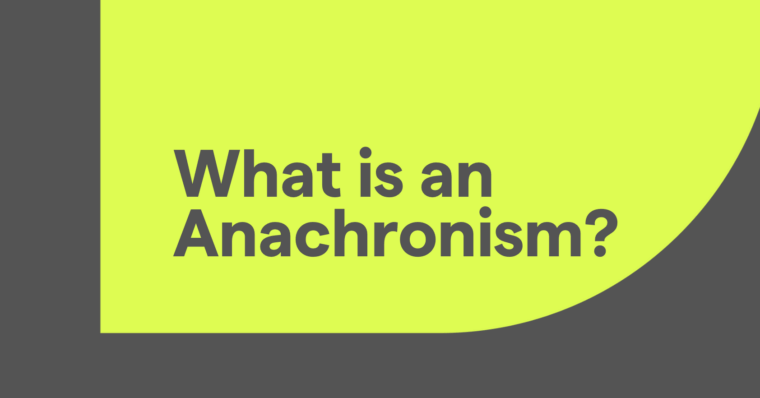
In your academic career, you’ll write a lot of essays. You’ll write some to inform your readers about a topic and others to analyze an idea. Some will argue for or against a specific position, while others will persuade the reader to take action. Authors use various strategies to achieve each of these goals, and one of the strategies they use to inform readers is the cause and effect essay.
As its name implies, a cause and effect essay explains how certain causes result in specific effects. Knowing how to write an effective cause and effect essay is an important skill for students in just about every academic field to develop.
What is a cause and effect essay?
A cause and effect essay is a type of expository essay that explores its topic by discussing the issue’s causes and consequences. For example, a cause and effect essay about deforestation’s role in climate change might discuss a few of deforestation’s specific causes, like a demand for wood and the clearing of land for grazing pastures, and then explain how these causes create effects that contribute to climate change.
As with other types of expository essays, the purpose of a cause and effect essay is to educate the reader. As an expository essay writer, think of yourself as the informed explainer who gives their readers the information they need to think critically about a topic and reach their own conclusions. Your goal isn’t to persuade, argue, or entertain your readers—although there are instances when authors of argumentative and persuasive essays use cause and effect rhetoric in their writing. It’s also possible to write a creative essay using the cause and effect format. However, within the realm of academic essay writing, a cause and effect essay is an expository piece of writing.
Cause and effect essays are similar to other kinds of expository essays in that they present facts in a clear, logical format. They employ an objective, analytical tone and stay away from flowery and inciting language. This is how they differ from argumentative, persuasive, and descriptive essays. You might use the passive voice more frequently in cause and effect essays than in other kinds of essays, especially in cause and effect essays you write for your science courses.
How to structure a cause and effect essay
Structurally, a cause and effect essay is similar to other types of essays. It starts with an introduction paragraph where you hook your reader, state your thesis, and give a quick preview of the points you’ll make to support your thesis.
Following the introduction, each point supporting your thesis has its own section. Each section can be as short as one paragraph or contain a few paragraphs, depending on how much information you need to convey and whether your essay must adhere to a word count or page limit. There are a few different ways to organize your essay’s body paragraphs. You can discuss each cause, section by section, and then discuss each effect afterward (if there is only one effect, include just a single section about it). Alternatively, you can discuss each cause and effect pair individually, giving each pair its own section.
The best structure for your essay depends on a few factors:
- How many causes you’re including
- How many effects you’re including
- The essay length requirement, if applicable
- How closely related the causes and effects are to each other
For example, if your essay is about a single effect with multiple causes, it might be most logical to discuss all the causes first and then write a section on their shared effect. Or if the causes and effects are more isolated from each other and you need room to explain how they fit into the bigger picture, the logical choice might be to give each cause and effect pair its own section and then tie them together in your essay’s conclusion.
As with other kinds of academic writing, the most logical structure is typically the best approach. If you aren’t sure how to structure your essay, ask your instructor for guidance.
After writing the body paragraphs, write your essay’s conclusion. This final section summarizes the points you made in the body, underscores your thesis, and brings your essay’s position to a logical conclusion.
How to write a cause and effect essay
To write a cause and effect essay, follow the same writing process that you follow when you’re doing other kinds of writing. Start with brainstorming your topic and jotting down any insights you have, questions you want to answer, associations you plan to make between topics, and facts you intend to reference.
After brainstorming, take your notes and create an organized outline. Remember, your essay outline is a guideline for you to follow as you write, not a final script your essay has to follow. List each section as a header in your outline and below it write down the bullet points you plan to cover within that section. Outlining makes it easy to visualize how your final essay will look and to determine where each body paragraph logically fits into the structure.
Once your outline is finished, it’s time to write! But before you dive into your first draft, nail down your thesis statement, if you haven’t already. This is a concise and informative statement that tells the reader exactly what your essay is about. It goes in your introduction paragraph, and each body paragraph that follows should support this statement.
With your thesis statement prepared, write your body paragraphs using your notes from your brainstorming session. Remember what kind of essay you’re writing and frame its body paragraphs accordingly—if a supporting paragraph doesn’t clearly show how its subject is a cause leading to a specific effect, reframe it to fit this format. Remember, you’re only on the first draft, and there will be time to revise it later.
Once you’re finished writing, give your essay time to cool off. Ideally, take about twenty-four hours before you edit it. When you go back and edit, pay close attention to how you’ve presented each cause and effect. Ask yourself the following questions:
- Is the relationship between each cause and associated effect clear?
- Are the causes and effects presented in a logical, coherent manner?
- Does this essay make my position clear?
- Does the essay leave the reader room to draw their own conclusion, or does it attempt to persuade or convince them of my position?
With the answers to these questions in mind, revise your essay to ensure that the content is presented in the clearest, most logical way possible. At this stage, also make sure your essay’s tone is appropriate and that there are not any glaring spelling or grammatical errors. You’ll check for these again when you proofread; the editing stage is primarily for revising your essay’s content.
With a clean, revised second draft in hand, give it another proofread for grammatical mistakes. Grammarly can help you with this. Once it’s cleaned up, you’re ready to submit your work.
Example outline of a cause and effect essay
As we mentioned above, there are a few different ways to structure a cause and effect essay. Here is one:
- Introduction
- Cause 1
- Cause 2
- Effect 1
- Effect 2
- Conclusion
This format isn’t ideal for every essay, though. In some cases, a format like this makes the content clearer:
- Introduction
- Cause 1
- Effect 1
- Cause 2
- Effect 2
- Conclusion
When you’re revising your essay, feel free to play around with the format and see which makes more sense for the information you’re writing about. You’ll likely use each of these formats in different essays depending on their specific content.
Cause and effect essay FAQs
What is a cause and effect essay?
A cause and effect essay is an expository essay that explains the relationships between specific conditions and their consequences, often within the context of a big-picture issue. These conditions are known as “causes,” and their consequences are known as “effects.”
What is the purpose of a cause and effect essay?
The purpose of a cause and effect essay is to educate the reader about how specific conditions are linked to certain repercussions.
How do you structure a cause and effect essay?
There are a few different ways to structure a cause and effect essay. Here are two of the most common:
- Introduction
- Cause 1
- Cause 2
- Effect 1
- Effect 2
- Conclusion
And:
- Introduction
- Cause 1
- Effect 1
- Cause 2
- Effect 2
- Conclusion






